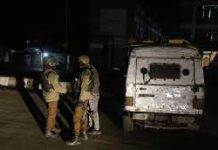 The Kerala Health Department confirmed the death of three people of the same family (50-year-old woman and her male relatives, aged 23 and 25) in Kozhikode district of Kerala after having infected by a rare virus called ‘Nipah’.
The Kerala Health Department confirmed the death of three people of the same family (50-year-old woman and her male relatives, aged 23 and 25) in Kozhikode district of Kerala after having infected by a rare virus called ‘Nipah’.
Reportedly 25 people are being kept under observation and nine others are undergoing treatment for the disease and remain critical.
“Today, we got the confirmation report from National Institute of Virology, Pune. We had sent four samples to the institute and three of them tested positive for Nipah virus,” confirmed Kerala Health Services Director Dr R L Saritha.
The nature of the virus was yet to be ascertained but we have put state health department on high alert, said State Health Minister KK Shylaja on May 20.
Health service department director has taken the decision to form the task force after the meeting with top health department officials. Officials claim that a single window system has been put in place to monitor emergency treatment to meet any further contingency.
Union Minister J P Nadda has directed the Director of National Centre for Disease Control (NCDC) to visit Kozhikode district to assist the state government.
Union Minister J P Nadda directed the Director of National Centre for Disease Control (NCDC) to visit Kozhikode district to assist the state government.
“Reviewed the situation of deaths related to Nipah virus in Kerala with Secretary Health. I have directed Director NCDC to visit the district and initiate required steps as warranted by the protocol for the disease in consultation with state government,” Nadda said in a tweet.
Mullappally Ramachandran, Lok Sabha MP and former union minister, also sought the central government’s intervention to control the outbreak of Nipah virus in Kozhikode district.
Rajeev Sadanandan IAS, additional Chief Secretary said, “Currently we are looking at possible sources of infection that is the primary host which is the fruit bat and the secondary host which are the domestic animals. For human to human transmission, we are looking at contacts of the people who have been infected and trying to screen all of them and put them under observation.”
He added that possibility of person to person transmission is very high. We have also created isolation wards.













